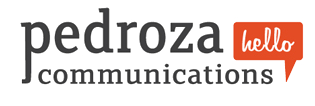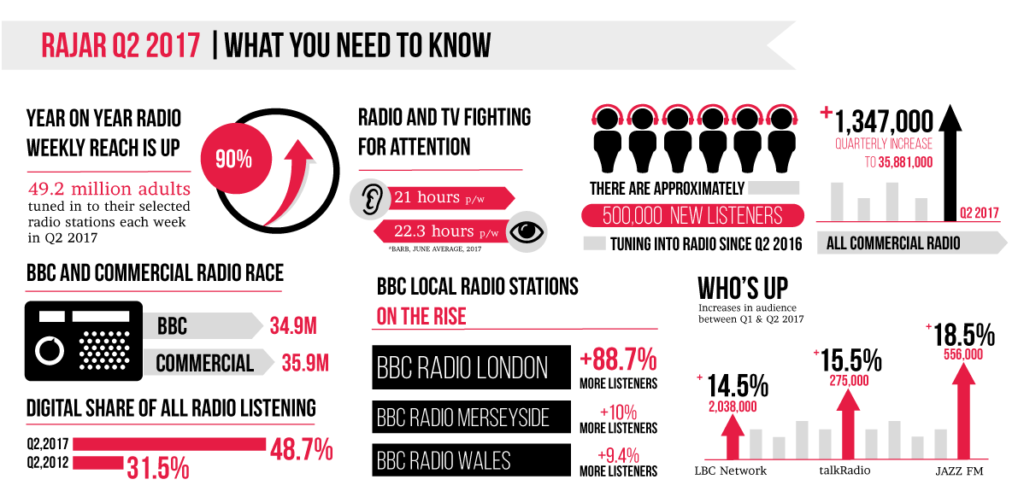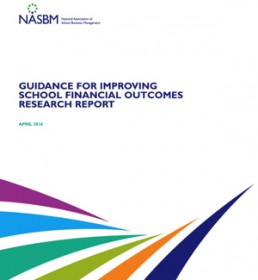Download our Bett PR guide
Download: Secure brilliant PR at The Bett Show
This useful guide covers everything you need to know:
- Planning and strategy
- How to create a newsworthy story
- Case studies, experts, influencers and celebrities
- Securing coverage
BETT education PR – 5 tips for autumn
Exhibiting at BETT is a big investment for any company. If you’ve not had time to start planning your education PR campaign here are five things that are important to start now.
1. Research the media your audience read
There are thousands of media outlets so it’s important to do your research and understand what your target audience consumes. People often think Tes is the key publication in education PR but it depends who you want to reach.
Talk to your existing customers and find out what media the read, watch, and engage with when they are in ‘work mode’. Think big and ask them about:
- Traditional media (TV, radio, print) - national, regional and local
- Education sector media – newspapers, magazines, websites and pod casts
- Social media - education blogs, Tweeters, Instagrammers, and YouTubers
So be open-minded about the media you target and get it right for your audience.
2. Decide what you are launching at BETT ASAP
I’s essential to have something to launch or announce at BETT. There are lots of options: research findings, product launch, competition finalist, partnership, new feature, campaign, to name just a few.
From a PR perspective, think about what is most newsworthy, will appeal to the audience, and help to set you apart. However, the sooner you decide, the more potential there is for PR. See our earlier post about planning for BETT.
3. Nail your case studies
Journalists are much more interested to speaking to your customers than you. Recruiting a small group of your customers (or even just one) who is happy to speak about how your product or service makes a difference can really add to your PR success.
Case studies bring a story to life and make it much easier for others to relate to your news. Also, in the education sector media journalists will be much more open to accepting a teacher-authored article for their publication or website.
4. Add credibility with an expert
Many companies involve experts in the development of their products and services. If this is the case, why not involve them in your PR plans for BETT? Their expert opinion of what you do, and the wider context, gives you another angle to offer to journalists. And, again it is someone other than you talking about your product or service which adds credibility.
5. Secure your coverage in the BETT previews
In the run up to BETT many education publications produce previews featuring highlights of what’s happening at BETT. Competition is fierce to be featured so get started early and make contact in September so you know the deadline dates and have a sense of what journalists want.
Next steps
If this all feels a little alien to you or overwhelming, then get in touch with BETT experts and let us help you plan and deliver a campaign that will get your voice heard.
Call us on 07813 938020 or email anna@pedrozacommunications.co.uk
Radio - alive and kicking
We love radio. It’s a persuasive medium which reaches the heart as well as the head.
The latest RAJAR figures have been published for the previous quarter – here are the key facts, (thanks to Markettiers4DC for sharing their insight).
49.2 million adults, that’s 90% of the UK adult population, are tuning in each week, listening to an average of 21 hours of live radio each.
Digital listening now accounts for 48.7% of all listening in the UK and we predict it will become the majority within the next 6 months.
There's been a huge spike in listenership for BBC Radio London, which registered a staggering 88.7% increase in audience figures quarter on quarter. A potential reason for this could be the major news events that occurred in London during this quarter of measurement, which highlights the importance of local radio for news, information and reassurance.
BBC Radio Merseyside and BBC Radio Wales have also registering a 10% and 9.4% increase in audience respectively. And LBC Network, talkRADIO and JAZZ FM, all achieved impressive audience gains.
What's also interesting is that the data shows that 44% of 15-24-year-olds who use social media claim to receive regular updates about their favourite radio station or presenter, which suggests radio is still hugely relevant for this important audience. As well as youngsters, 31% of adults claim to follow the same pattern.
Radio is a powerful medium for education PR stories and can reach teachers, head teachers and parents. If you want to know more about how radio can communicate your message get in touch for a chat.
School business professionals invited to help shape future direction of new organisation
 Our client the National Association of School Business Management (NASBM) is calling on school business professionals to provide their thoughts and insights into the challenges experienced by the profession. The call coincides with the announcement that NASBM will become the Institute of School Business Leadership (ISBL) in November this year.
Our client the National Association of School Business Management (NASBM) is calling on school business professionals to provide their thoughts and insights into the challenges experienced by the profession. The call coincides with the announcement that NASBM will become the Institute of School Business Leadership (ISBL) in November this year.
The proposal which was made by the Trustees and endorsed by the Association’s 3,000-strong membership base will give the school business profession a more formal representative body with an emphasis on stronger professional development and quality assurance.
Increased pressure on school business professionals
Speaking on the announcement of the change to Institute, Tracey Gray, Chair of the Trustees of NASBM, commented: “Education policy has changed immeasurably in recent years and this has resulted in increased demands and levels of complexity within the role of school business professionals.
“The core function of our schools is to ensure the best possible outcomes for our students. School business leaders provide essential specialist support to head teachers to effectively manage the business aspects of running a school, maintain its facilities and allocate and be accountable for financial resources. Schools are under more and more pressure and school business practitioners play an essential part in identifying innovative ways for schools to relieve these pressures and ensure financial stability and sustainability.
“Our move to become the Institute of School Business Leadership (ISBL) will provide our business professionals with stronger representation whilst supporting them through our Professional Standards, interpretation of policy detail, accountability and regulations.”
Schools business professionals called to share views
ISBL will officially launch on Monday 20th November 2017, following the NASBM Annual Conference (16-17 November). Prior to the launch, the Trustees of NASBM want to hear from as many school business professionals across the country as possible, to better understand what they believe should be the priorities for the new Institute.
Stephen Morales, Chief Executive of NASBM, added: “In making this transition, we believe that the new Institute will better support its members and the sector at large. For us to do this effectively it is vital that school business professionals share with us what they see as priorities for their professional body. This will enable us to serve them effectively from day one as an Institute.
“The sector at large is facing many similar challenges and our vision is that we should support as many of the school business leaders within it as possible. We witness the innovative approaches that many school business professionals employ to bring best practice to their own institutions and are keen that this should be more widely shared which is why involvement in our current research is so important.
“The new Institute will be committed to delivering greater support on qualifications and personal development. We believe that this will enable the profession to boost its reputation and credibility, as well as enabling individuals to cope with increasing complexity and the day to day pressures they face.”
Please visit www.nasbm.co.uk/isbl to share your views and get involved. The survey will remain open until the end of the Summer Term.
Crisis communications how to get organised
Dealing with a communications crisis is challenging for any leader. State schools are particularly exposed for a number of reasons:
- They receive public funding
- Their performance is reported publicly – Ofsted judgements, exam results, and school performance tables
- They need to keep children safe for a large proportion of the day (about 1,300 hours per year)
- Parents, carers, grandparents and the general public have strong opinions on education and the role of schools
Even schools that are Outstanding, have brilliant results and parents queuing to get their children in, face issues and challenges which will attract public interest and newspaper headlines.
When a crisis hits one of the things that regularly gets overlooked is who is going to speak to whom. Being clear on roles can mean the difference between containing a crisis and escalation. Whatever the situation, these are the essential roles that need to be delegated.
First point of contact
In a crisis, how an incoming enquiry is handled can make all the difference (think about some of the times you’ve had poor customer service and how you felt). In a school it is likely that this will be your front of house/office staff. Make sure they are briefed and understand what you want them to do. Ensure phones are covered at all times. Ensure email is monitored every 15 minutes.
When dealing with media enquiries a message should always be taken and staff must avoid getting involved in any discussion about the issue.
Media spokesperson
It is essential to agree who should speak to the media. It is likely it will be the Chair of Governors or Head Teacher or Principal. Consider who will come across clearly, who has authority, and who can remain calm even when asked difficult or challenging questions.
The media spokesperson should be media trained and have experience of speaking to journalists, and giving TV and radio interviews.
The media are also keen to get the perspective from parents and students. It is sensible to identify a parent governor who can speak to the media. Also, if you are a secondary school, identify two students who could also speak to the media if required is useful.
Make sure anyone speaking to the media is well briefed and can handle sticky questions if asked.
Parent meetings
Dependant on the crisis, you may decide to coordinate a number of parent meetings. Generally the head teacher or principal will lead on these, but consider asking the Chair of Governors and a parent governor to attend as well. They can provide support and also offer a different perspective on the issue which can be very useful.
When a crisis hits there is often little time to think through detailed plans. However, making sure you know who is speaking to whom and what they are saying can make an enormous difference to the impact of a crisis and its long term effect on the school.
Helping the cultural sector reach teachers
The cultural sector is continually looking at how it can engage children and young people and the online world is the key frontier for this engagement. However, the stark truth of the situation is that it is very hard for education teams in cultural organisations to ‘get in front’ of young people when they are online.
Here are three things which could help cultural organisations to be successful in reaching teachers, and don’t cost the earth.
1. Make teachers your best friends
There was lots of discussion about how to engage teachers, the challenges of getting their attention and how to cross the chasm of the school office ‘black hole’. A lot of people seemed quite distant and relied on emails and letters to engage teachers.
However, Internet has given rise to lots of informal ground-up teacher networks that offer brilliant opportunities to engage teachers, whether face to face or online. Events like TeachMeets or other meet ups such as Primary Rocks, offer greater opportunities to meet teachers and the costs to get involved won’t break the bank. There are lots Twitter chats, most well known in the UK is UKEdChat but there are lots of others where you can hear direct from teachers, or get more closely involved.
2. Free Google AdWords for charities
Many of the people we spoke to weren’t aware that Google give eligible charities a monthly $10k grant of AdWords to spend. We work with organisations where the deployment of this grant has led to a 20% uplift in traffic to their website. More information here: https://www.google.co.uk/intl/en/grants/eligibility/
3. Platforms and distribution
So many cultural organisations have amazing resources but connecting them with teachers is a huge challenge. The conversations we had at the conference showed that lots of people were unaware of distributing resources via London Grid for Learning, uploading resources to TES, or sharing resources on platforms like Pobble. This report commissioned by Arts Council England and undertaken by Eylan and Storythings is also worth reading to understand more about how, and when, teachers seek out resources.
And finally...
This post was inspired by Culture 24’s conference, Let’s Get Real, which brought together organisations and individuals from across the sector to share ideas, experiences and plans about how organisations could reverse this trend. Curated by Anra Kennedy, Culture 24, and Eylan Ezekiel, we found out about some truly brilliant digital projects and initiatives. A lasting memory is the point made by Amy Cotterill, Museum Development Officer, Essex County Council who explained that 'doing something digital' wasn’t an aim in itself, instead you had to start with the audience and what would engage them - we agree completely.
First News host children’s EU Referendum debate
First News, the UK's only newspaper for young people, have invited children aged 7 to 14 to take part in the Children’s Referendum debate around whether the UK should stay in or leave the EU.
Teachers across the country have put forward children from their schools to represent both sides of the debate, taking place today (23 May) in Westminster. We are very excited about this initiative and are working with First News to encourage children to have their say. All children can take part in First News’ online poll, which will close on Monday 13 June and the results will be announced on 17 June.
First News Editor, Nicky Cox MBE, says: “The Children’s Referendum will provide a voice for the future generation in this debate, the very people who will be most affected by the decision. Giving children a solid understanding and involving them in the discussion is critical. In my view, parents and teachers have a very important role in helping children to get access to the facts and we will do our best to help support them.
“We know how passionately engaged children are with what goes on in the world around them - from terrorism to the refugee crisis and, right now, the EU referendum. Kids want to know what’s happening and when the facts are explained in language they understand, they really get it.”
On 3 June 2016 First News will release a special report on the issues behind the EU referendum. A full pack of useful teaching resources including debate formats, activities to help spot bias and develop opinion will be available for all subscribing schools. Samples of these resources including background information on the EU and tips on structuring a debate are already available for free, so please take a look.
Please help us support this excellent initiative on Twitter using the hashtags #FNEURef and #FNInorOut.
Guidance for Improving School Financial Outcomes
We’ve been doing some work with the National Association of School Business Management (NASBM), helping them launch an exciting and highly valuable new report for schools.
At the end of 2015, NASBM commissioned a deep dive research project into operational efficiency in schools. The final report, Guidance for Improving School Financial Outcomes, suggests that all state-funded schools, even those previously considered ‘efficient’, have the ability to make significant savings through simple changes and efficiencies.
Highlights from the research
NASBM’s research found that even small administrative changes – such as using existing resources more prudently and implementing better time management and staff training – could result in savings of up to 20% on administration costs.
Budget-saving changes schools are encouraged to make include:
- Joining with other schools for procurement to make bulk orders, driving down costs;
- Training senior leaders to improve their financial acumen and enabling them to make more efficient purchasing decisions;
- Introducing improved cash management and payment processes;
- Making better use of non-teaching time by reducing the amount of time staff spend on meetings and cutting unnecessary email traffic;
- Making the most of technology by refreshing old hardware and reducing print and copy costs.
NASBM’s guidance is available to all schools and can be downloaded from the website. We would certainly recommend registering for a full copy!
Many thanks to Optimus Education who co-funded this important project, and also to OEE Consulting, the experienced 'Lean' consultants who undertook the research. We are sure that the final report will prove to be an extremely valuable resource for schools across the UK.
First News – current affairs and teaching literacy
First News is the UK’s only newspaper for young people and the widest-read children’s publication in the country, with almost half of primary schools subscribing to it. In response to primary teachers saying they wanted to make better use of current affairs as a tool to teach literacy, First News are now developing the Hub.
The Hub is a digital news and activity tool, with the overall aim of exciting children about reading and building their literacy skills through comprehensions, word puzzles and topical debates. Content will be updated weekly and linked to coverage in the First News newspaper, adding to the fantastic archive of resources available to pupils from Years 2 to 6 to help them extend their core literacy skills. Children will be able to earn points and badges to work their way up score tables, and teachers will be able to track each child’s progress.
We are working to support First News with this excellent resource by positioning it as a valuable tool for improving literacy in primary education. For more information on the excellent work First News is doing to transform the ways in which literacy is taught in the classroom, take a look at their website and register your interest.
How to pitch your story
 Kira Cochran is the incredibly busy editor of Comment is Free at The Guardian. She recently joined a session with the columnist Suzanne Moore to give her perspective on what editors are looking for in pitches made by journalists and PRs. We were lucky to get a ticket.
Kira Cochran is the incredibly busy editor of Comment is Free at The Guardian. She recently joined a session with the columnist Suzanne Moore to give her perspective on what editors are looking for in pitches made by journalists and PRs. We were lucky to get a ticket.
Kira gets about 1000 pitches a week and admirably tries to scan everything. However, making a good pitch is essential to really get her attention. She started as a freelance journalist so understands at a personal level what it’s like to pitch. She had some sound advice.
- Identify where your idea will fit in the publication or website and email the right editor.
- If you don’t know who does what call switchboard and ask for the editors’ administrator. Always be pleasant and friendly they’re influential.
- Address the editor personally. Bizarrely, Kira still get emails addressed to ‘Dear Sirs’.
- Don’t start a pitch by telling an editor your story is amazing. Let the story do the work.
- Pitch in two short paragraphs. Make it direct, capture what’s interesting and give the bones of the story.
- Explain the peg for the piece, in other words why now (more on this point here).
- If you’re pitching as a PR say who will write the piece.
- Make the subject line interesting and something that’s easy to find in a busy inbox. Something titled ‘article idea’, however good, isn’t easy to spot.
- Deliver what you promise in your pitch. Ensure it isn’t simply 200 words plus a lot of waffle.
- Make sure you have a good reputation online. If an editor hasn’t worked with you before they want to get a sense of who you are.
Kira’s final point was that pitches were strongest when the writer was the best person to tell the story. Of all the advice given this really struck a chord with us. We have a list of questions we consider when we work with clients to develop interesting, newsworthy stories. Now we have a new one for our clients: “Are you actually the best person to tell this story?”









